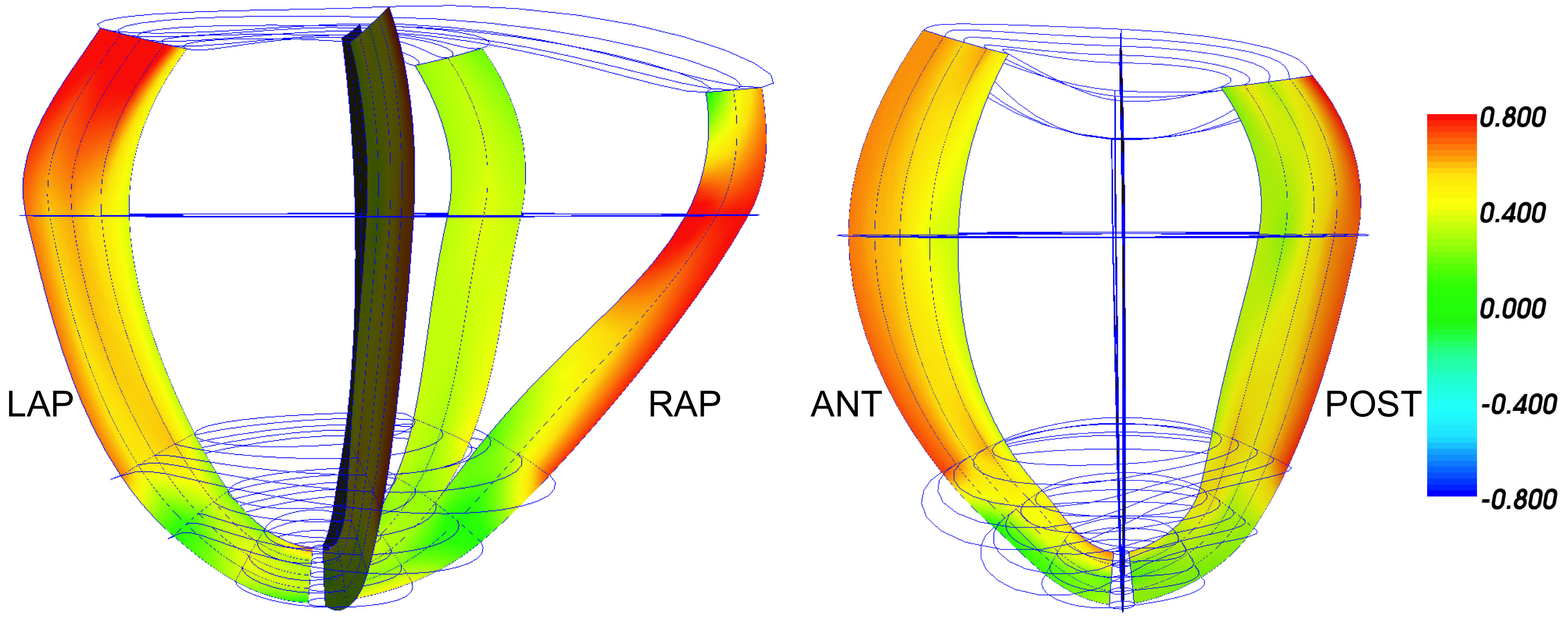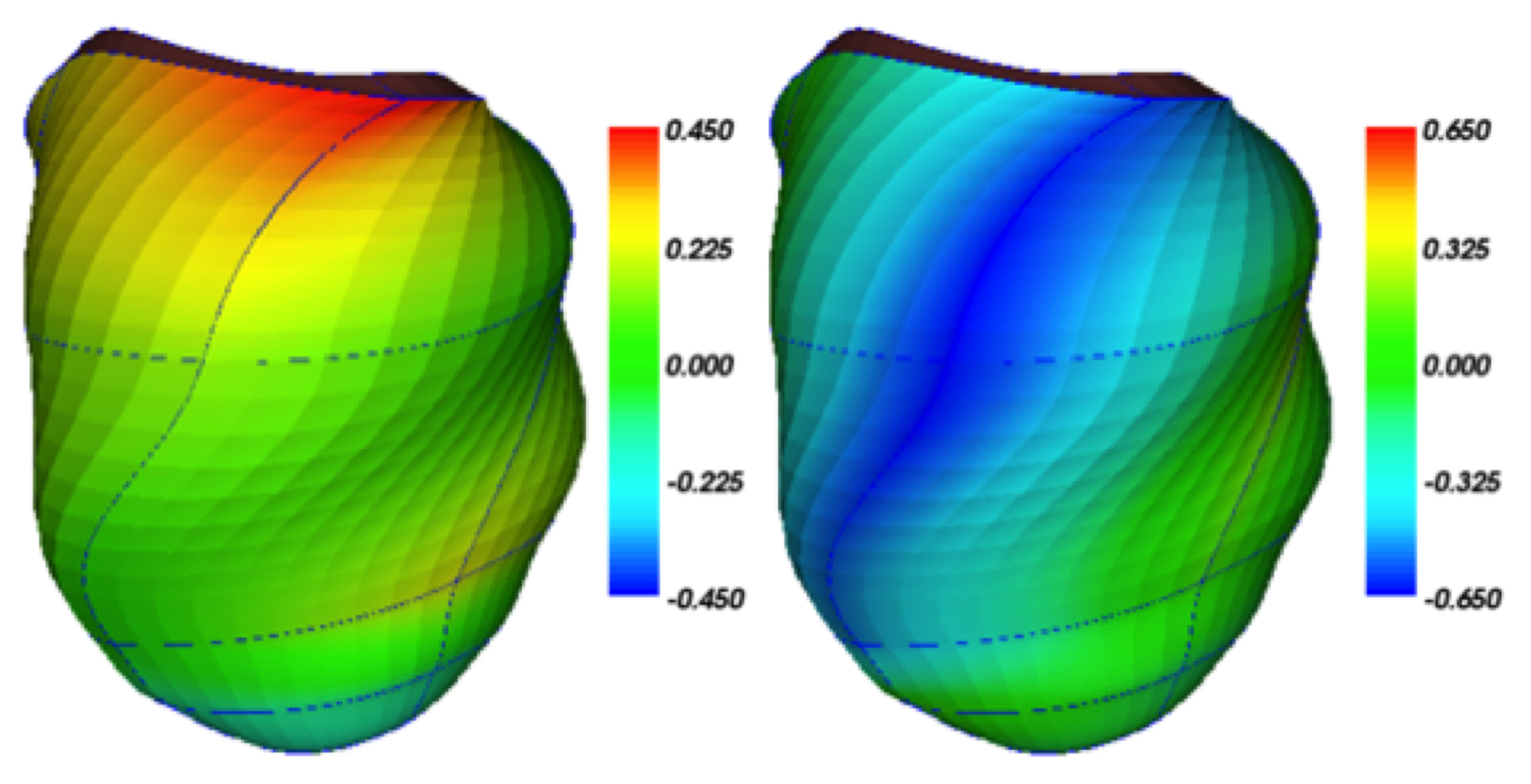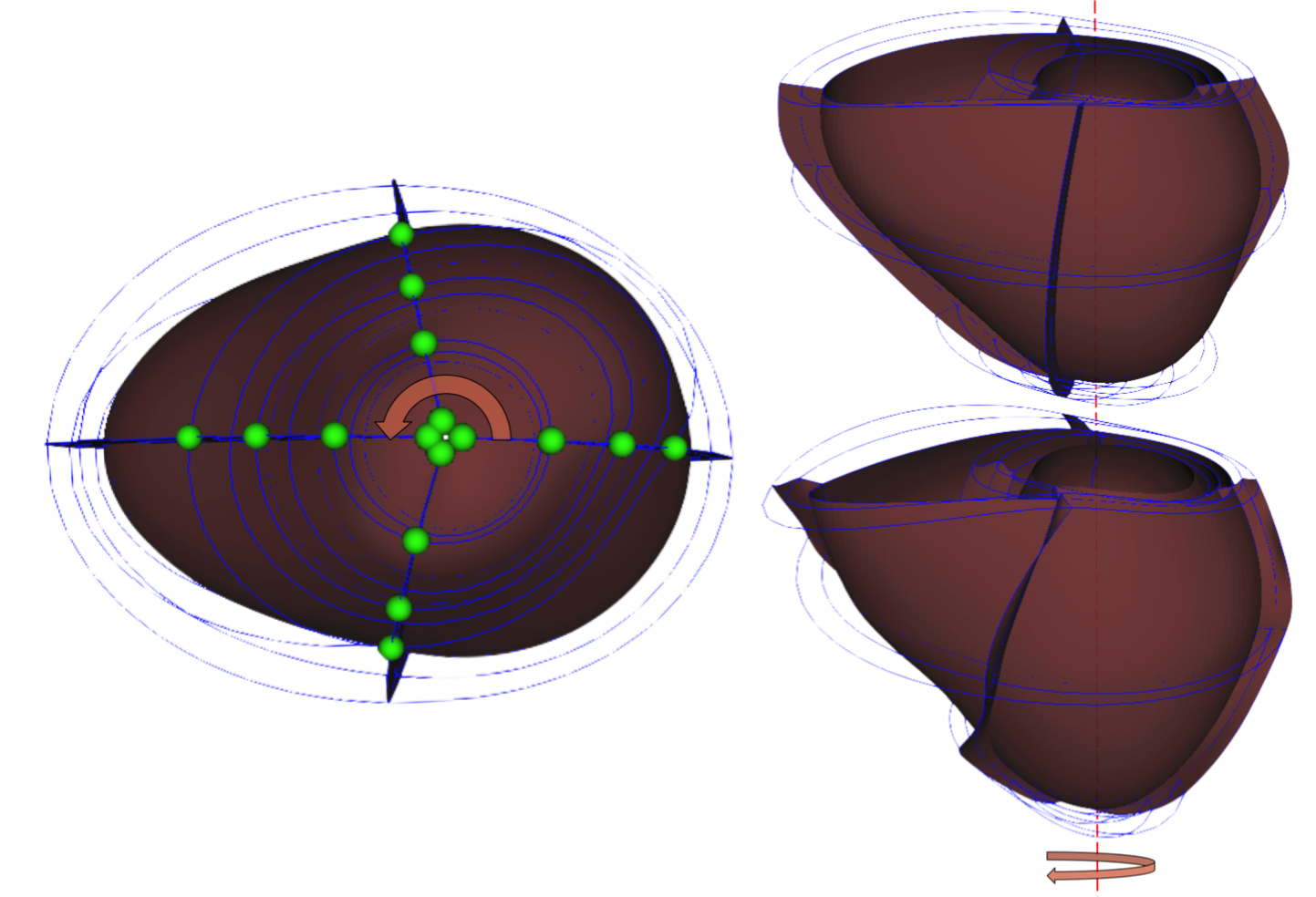An 80-element, high order computational biventricular heart failure model (left) with dynamic boundary conditions to simulate the tVAD, (top right) before applying rotation and (bottom right) after a net rotation of 45 degrees was applied in a counterclockwise direction at the time of peak systole (187.5 ms)

Undeformed mesh with maximum principal strains rendered; large coverage case at peak pressure for 75 degree applied rotation; (left) posterior view of longitudinal-transmural cross-sections dividing the anterior and posterior walls in the left ventricle (LAP) and right ventricle (RAP); (right) lateral view of longitudinal-transmural cross-sections (anterior-ANT; posterior-POST) orthogonal to LAP and RAP.

Finite strains that contribute to large principal strains (maximum component) estimated near base in the LV in deformed state at peak pressure (surfaces are smooth; ribbing indicates deformation from no load state and is an intentional artifact of rendering at low resolution); (left) transmural normal strain (E33) for applied rotation of 75 degrees, indicating stretching normal to the epicardium (red zone); (right) corresponding in-plane shear strain (E12: fiber/cross-fiber); both components and smaller values of other components result in large principal strains.
